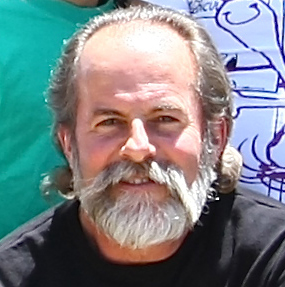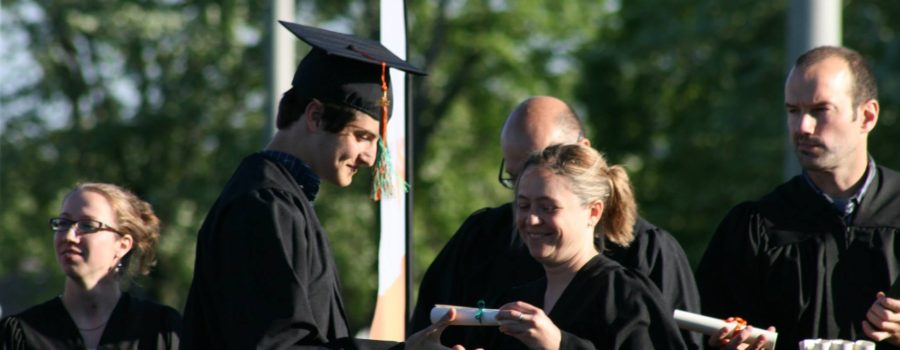On my last post—Come and see (part 1)—I began to draw your attention to the unjustified risk innumerable evangelicals are taking by overrating academic achievements. That we are stacking too much hope on head knowledge is a reality that cannot be denied, after all, the decisions and resolutions that such reverie has engendered speak too loud to be ignored. And I must say, the message is rather alarming.
How did we arrive to such specious optimism? I suggest it came through the secularization of Christian education, a secularization generated by a forceful belief in its adeptness. But it is precisely this so-called “adeptness” I am calling into question, at least in relation to Christian Knowledge.
Two kinds of learning
Christian learning is primarily a moral undertaking, consequently, if a person doesn’t live the right kind of life he will get nowhere as far as Christian knowledge is concerned. To attempt to dissimulate this truth behind diplomas can only aggravate the tragedy.
On the other hand, intellectual learning has nothing to do with morals. One can be a serial killer and obtain more diplomas than professor V.N. Parthiban. Unfortunately, this crucial difference is being overlooked and there we go, producing “ministers” as Clemson University produces architects.
What I am saying is that nowhere in the New Testament are diplomas exalted. In fact they are not even mentioned. So where are all these new evangelical requirements coming from? It seems to me we have gone astray from the path of knowledge and here we are, looking for worldly substitutes.
Back to active answers
On my last post I divided true answers into two subgroups, namely, passive and active answers. I also advanced that passive answers can only produce information, not knowledge.
In this present post I will continue to contend that only active answers can engender true knowledge.
Nathanael
We have already considered the answer Jesus gave when asked: “Rabbi, where are You staying?” His primary response was as brief as active: “come and see”. It must be understood here that the “come and see” was not the answer per se, it was the package in which the answer was hidden, and the only way a person could unpack it was by following Jesus to reach the place where He was staying.
What follows is another example of what an active answer can accomplish.
Philip found Nathanael and said to him, “We have found Him of whom Moses in the law, and also the prophets, wrote—Jesus of Nazareth, the son of Joseph.” 46 And Nathanael said to him, “Can anything good come out of Nazareth?” Philip said to him, “Come and see” (John 1:45,46).
So here we have Nathanael asking: “Can anything good come out of Nazareth?” Philip could have given him a two hours teaching, but he knew better. He knew a passive answer would have led nowhere. So he told him: “Come and see”.
It is this sort of operative answer that leads a person to breathing knowledge. In the case of Nathanael it worked miracle: “Rabbi, You are the Son of God! You are the King of Israel” (John 1:49). This is knowledge brethren! Contrary to mere information it cuts deep into the soul and hits the whole man; it also brings a change and kindles the heart.
A teaching that doesn’t incite motion—and at times sacrificial motion—is useless and dangerous. Dangerous because it might prompt a person to believe he knows, when in reality he knows nothing as he ought to know.
The woman at the well
Then we have the woman at the well: “Come, see a Man who told me all things that I ever did. Could this be the Christ?” Then they went out of the city and came to Him” (John 4:29,30).
Here again the result is stunning: “Then they said to the woman, “Now we believe, not because of what you said, for we ourselves have heard Him and we know that this is indeed the Christ, the Savior of the world” (John 4:42).
Paul refers to such hearing when he told the Ephesians:
But you have not so learned Christ, if indeed you have heard Him and have been taught by Him, as the truth is in Jesus” (Eph. 4:20,21).
Such scriptures don’t leave the reader on a chair; they propel him forward where knowledge is to be found. They incite moral motion so to speak, and that’s what a person needs if he wants to reach the truth of God.
What the “come and see” implies
When someone tells you, “come and see”, he is asking you to follow him. So the dictum implies such moral substantives as obedience, submission, and surrender. This is one of the reasons why Jesus told His disciples: “follow me”, for while a person can get Christian information in a static state, he will not attain Christian knowledge that way.
This is precisely what Jesus attests. Pay deep attention to His words:
Then Jesus said to them, “A little while longer the light is with you. Walk while you have the light, lest darkness overtake you; he who walks in darkness does not know where he is going” (John 12:35).
Here we have it again, according to Jesus the static Christian will be, soon or later, overtaken by darkness and will not know where he is going. He might have all sorts of diplomas in his pockets but if he does not know where he is going what is the point to have him as a guide? This is a serious issue and we will do well to address it with integrity of heart.
Another thing the “come and see” implies is that the person refusing to come will not see. In other words, a passive answer—or passivity in general—leaves a person blind. It is so because a passive answer doesn’t reach the eyes, it only reaches the ears. And as important as the ears are they cannot usurp the place of the eyes.
Conclusion
I leave you with Jesus’ words: “I speak what I have seen with My Father, and you do what you have seen with your father” (John 8:38). And again: “Most assuredly, I say to you, We speak what We know and testify what We have seen, and you do not receive Our witness” (John 3:11).
Here Jesus is simply affirming that what we know equals what we see. He was speaking here with Nicodemus to whom he had just said: “Are you the teacher of Israel, and do not know these things?” (John 3:10). Obviously Nicodemus had plenty of information stored in his head, but he was lacking in knowledge. He needed to come and see. What about us?
(You might be interested to read another series I wrote which points out to the same direction. Here is the link of (part one): https://simondesjardinsblog.com/shadows-and-substance/
If you think this post can help somebody else you can share it with the options presented bellow.













